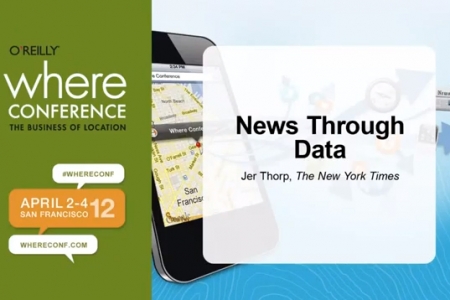As people upload and donate their data, they realize that this information is not just numbers, it’s a map of their lives. Thorp refers to this as ‘data philanthropy.’
Jer Thorp, Data Artist in Residence at the New York Times, discusses two projects which span a large range: Near and Far
Near
While working at Wired, they looked at mobility of people, by looking at data donated by a European telecom company. The research pointed out that everyone is predictable in behavior. Most people travel to the same places around the same times. This is valuable for people who are studying epidemics and emergency response.
After the hubbub about Apple collecting location data from iPhones and iPads, they made an effort to make all of the data available to researchers who could help the public good. The project is called OpenPaths, which allows data analysts and researchers to:
- Upload data to a central location
- Store it securely
- Explore the data
- Engage in a transaction with researchers who want to use that data in their studies.
Initially, they’d planned to use the iPhone data, and now there is a set of apps which allows individuals to store and track personal location data. It enables individuals to explore and upload their data. Individuals have the opportunity to voluntarily donate their location data to specific research projects.
He points out that in legal codes, cellular phones are considered ‘biographers’ of daily activity, meaning that getting a search warrant for a cellular phone is considered a crucial step in collecting evidence.
As people upload and donate their data, they realize that this information is not just numbers, it’s a map of their lives. Thorp refers to this as ‘data philanthropy.’
Far
The Kepler project is a NASA project looking for exo-planet candidates. It has been fairly successful in discovering 2,326 exoplanet candidates. 48 of them are in the ‘hospitable zone,’ meaning humans could theoretically live there someday.
Oblong is doing some amazing things with interaction, and they built an interactive tool called Exo which allows people to virtually fly through the Kepler universe using gestures.
He demonstrates this system, and shows how it is possible to explore, to see planet temperatures and sizes. For another demonstration, see this Exo video. It’s possible to visualize the data in interesting and useful ways, using research from very distant data.

